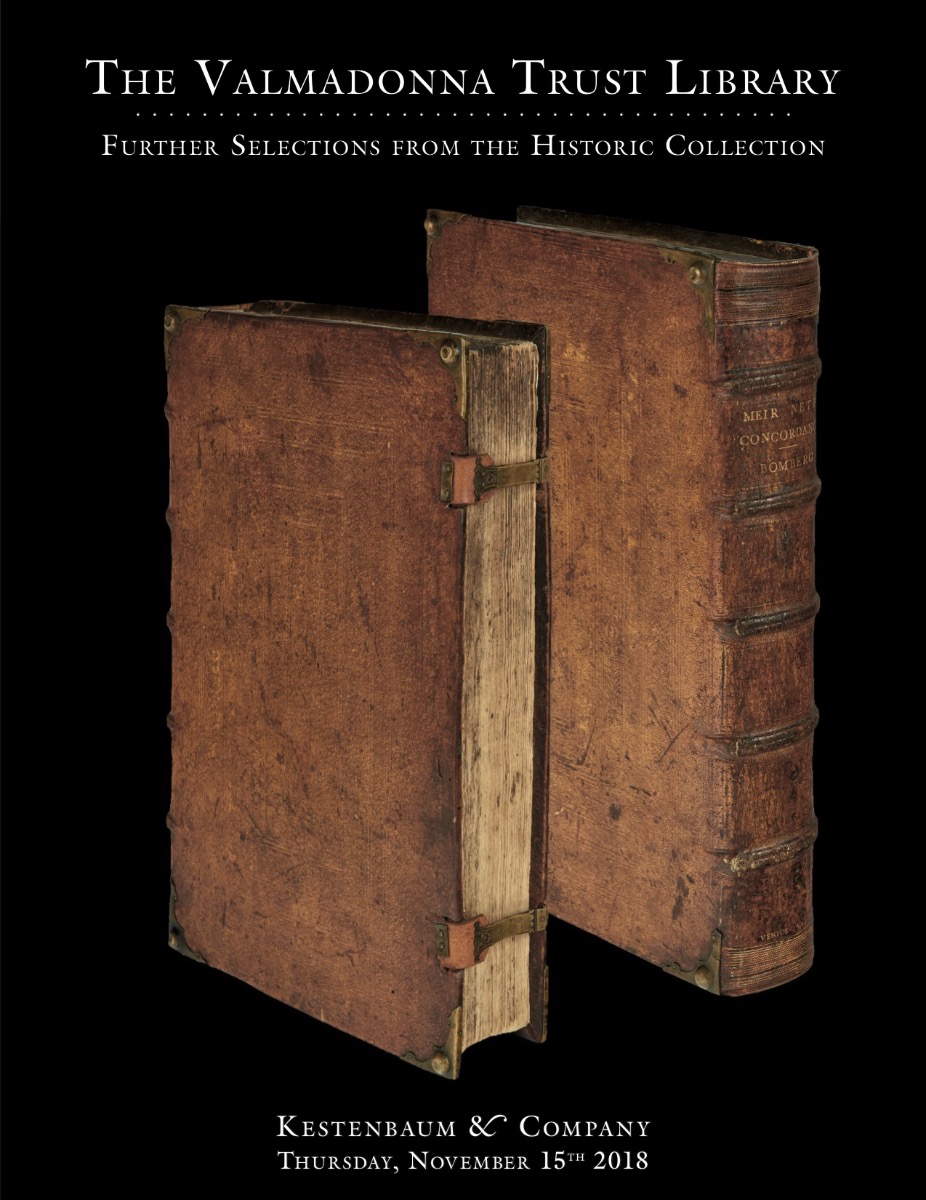(RaDa”K). Sepher HaShorashim [“Book of Roots”: a Biblical lexicon and grammar].

AUCTION 79 |
Thursday, November 15th,
2018 at 1:00 PM
The Valmadonna Trust Library: Further Selections from the Historic Collection. * Hebrew Printing in America. * Graphic & Ceremonial Art
Lot 78
KIMCHI, DAVID
(RaDa”K). Sepher HaShorashim [“Book of Roots”: a Biblical lexicon and grammar].
Naples: [Joshua Solomon ben Israel Nathan Soncino] 1491
Est: $10,000 - $15,000
PRICE REALIZED $6,500
The present copy of Sepher HaShorashim is heavily annotated with hundreds of marginal annotations that are regularly introduced with the initials “Aleph Aleph.” This certainly stands for “Amar Eliyahu,” indicating the glosses of Elijah (Bachur) Levita (1469–1549) the famed Hebrew philologist, grammarian, and lexicographer. Born in Germany, he spent most of his life in Italy (Padua, Venice, and Rome) where he taught Hebrew language. It was largely through Levita’s Nimmukim for Sefer Michlol (ed. Venice, 1545) and for Sepher HaShorashim (ed. Venice, 1547) that many of his pupils, including many renowned Christian humanists, were able to access Kimchi’s grammatical writings.
The sheer number of manuscript annotations in the present volume is evident that it was once owned by a scholar who made assiduous use of its contents to master the finer points of Hebrew grammar. An added manuscript leaf in an early hand, tipped in at the end of the volume reproduces the text on the printed ff. 166r-167r.
